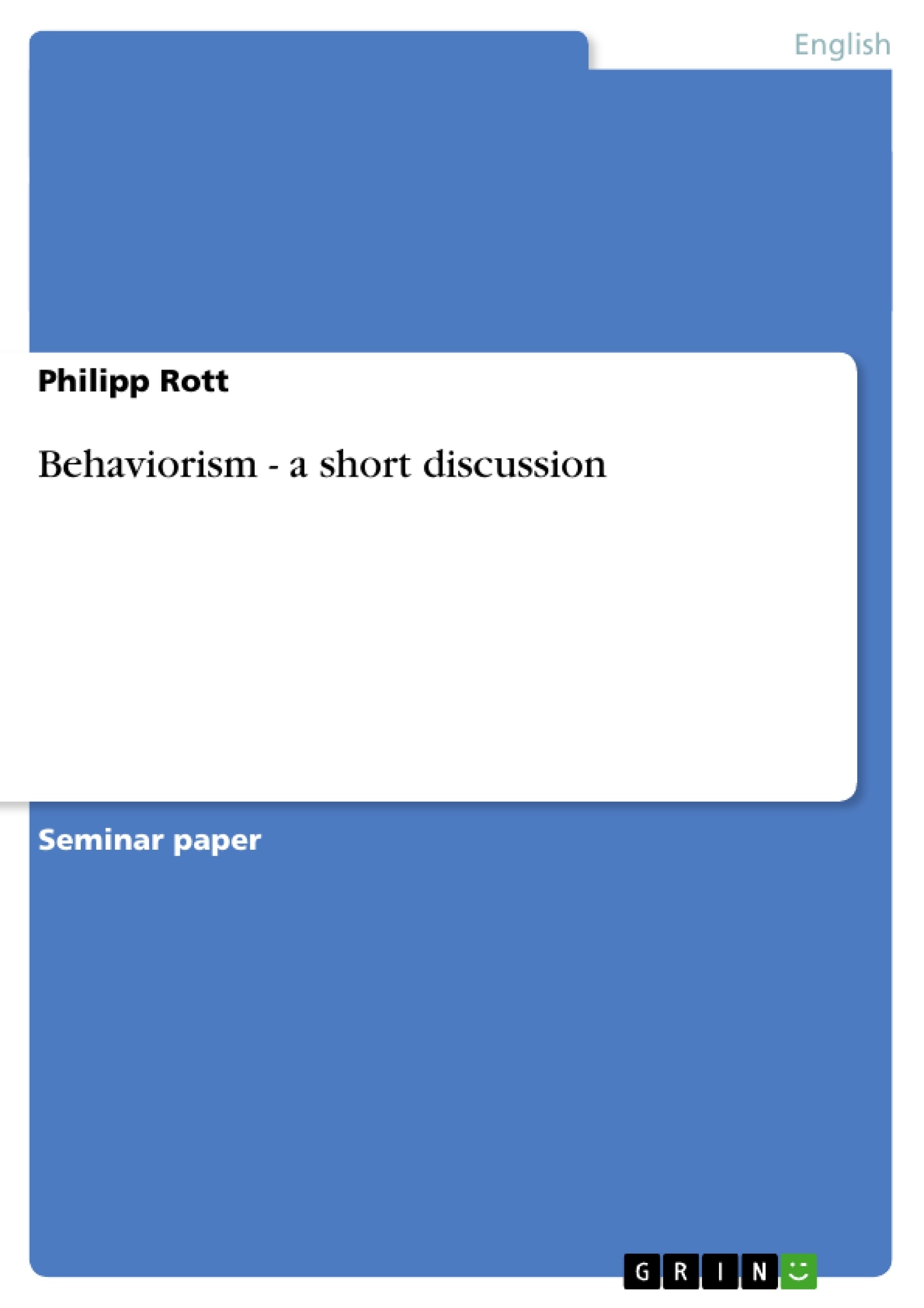Excerpt
1. Introduction
How do children learn to speak? And why? Do all children start to use language at some age? Or do they need a certain “trigger”? Is our ability to use a language innate? Or are we conditioned to use language as a response to our environment? There are many other questions to be raised, for example about the function of a language, the process of acquisition, or the meaning of the term “language” as such. Psycholinguistics tries to answer at least some of these questions.
“Psycholinguistics is the name given to the study of the psychological processes involved in language. Psycholinguists study understanding, producing, and remembering language. […][They are] concerned with listening, reading, speaking, writing, and memory for language […] [and] interested in how we acquire language, and the way in which it interacts with other psychological systems.” (Harley, 1995: p.1)
Thus, psycholinguistics is concerned with “(…) the correlation between linguistic behaviour and psychological processes thought to underlie that behaviour (…)” (Crystal, 1992: p. 291).
Due to its interdisciplinary nature, psycholinguistics has been influenced both by linguistic and psychological findings and theories. One of the main psychological schools which have contributed to psycholinguistic theories is behaviourism. Although early behaviourism was not concerned with language as such, but rather with the observation of any (animal or human) behaviour, Burrhus Frederic Skinner (1904-1990) later focussed his interest on verbal behaviour. He employed behaviouristic methods and tried to describe the acquisition process as a complex form of conditioning. One of his aims was to apply his findings in the development of new teaching methods.
This paper is designed to give a brief overview on behaviouristic key terms and ideas. Due to its importance for psycholinguistic aspects, the main focus will be on Skinner’s behaviourism, although the “roots” of behaviourism will also be mentioned shortly. The concluding part of this paper deals with Skinner’s theories on verbal behaviour and the controversy they aroused. Some of the most common critical remarks concerning Skinner’s ideas will be presented and commented upon.
2. Early Behaviourism
In 1913, John Broadus Watson published a provocative paper about psychology in which he argued that psychology should not waste its time being concerned with introspection, the observation of one’s inner processes, but it should rather study publicly observable behaviour, i. e. behaviour which can be observed by other persons as well. (see Zimbardo, 1995: p. 9) Watson stated that a science had to be founded on observable data, not on speculations about what is going on in a person’s mind, which behaviourists call the “black box”.
In his work, Watson was largely influenced by the findings of Russian physiologist Ivan Pavlov and his classical conditioning. Pavlov had discovered that a physiological response, such as salivation, could be triggered by stimuli which originally were not thought to elicit this reaction, for example the ringing of a bell. (ibd.) In Pavlov’s experiments with dogs, the neutral stimulus (the bell) was constantly followed by the unconditioned stimulus (food), which then caused the unconditioned response (salivation). After some “training”, the dogs produced saliva on hearing the bell ring, although they had not been offered food. The neutral stimulus had become a conditioned stimulus and the unconditioned response had turned into a conditioned response.
Watson concluded that every human behaviour was based on this kind of inborn or conditioned sequence of stimulus and response and claimed that, therefore, introspection was unnecessary as both stimuli and responses were potentially observable data. He thought that every behaviour was a response to some environmental stimulus, and, thus, it was possible to predict the response or behaviour of a person whenever a certain stimulus was given. Likewise, he considered it possible to say what kind of stimulus had elicited a given response.
Watson’s aim was to predict and to control human behaviour. He thought that “(…) if all behaviour could be shown to be the result of learning, it would open up new possibilities for changing undesirable behaviour.” (Zimbardo, 1995: p.10) This idea about the possibility of controlling human behaviour on the one hand and his devotion to observable data and the rejection of introspection on the other hand were the main features that distinguished behaviourism from all other psychological schools at that time.
[...]
- Quote paper
- Philipp Rott (Author), 2000, Behaviorism - a short discussion, Munich, GRIN Verlag, https://www.grin.com/document/45359
Publish now - it's free






















Comments